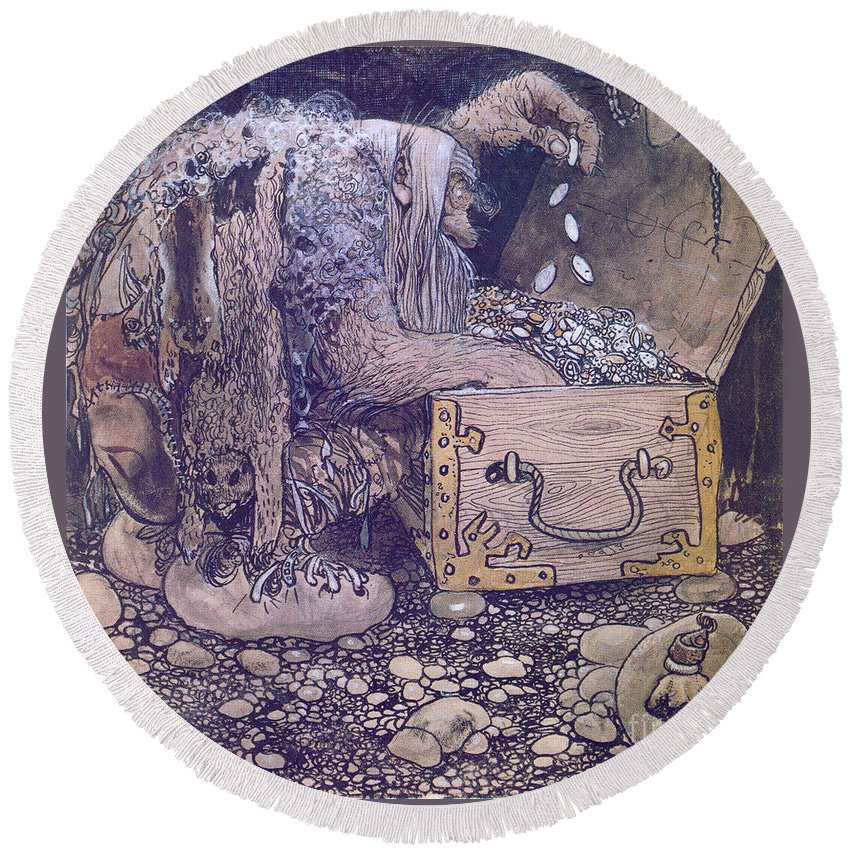Trolls are one of the mythical creatures that are portrayed in popular culture on a regular basis. We’ve seen them helping Queen Elsa in Frozen, trying to cook Hobbits in the Lord of the Rings and guarding bridges to the annoyance of our fairy-tale heroes. This large variety, however, may not depict the true Norwegian Troll from the legends.
As Norse mythology was mostly handed down orally, it can be difficult to get a real handle on what’s what. Gods and monsters are referred to by different names and when we come to interpret the source material – the Poetic Edda and Prose Edda that were the best attempts at writing everything down – we find various scholars disagreeing on almost everything.

Almost everything...
The noun troll or troll, meaning variously fiend, demon, werewolf and giant, comes from a proto-Germanic word trullan or unknown origin.
There’s much overlap in the terms jötunn (giant), troll, þurs (hostile monsters) and risi (heroic beings). Some theorize that they’re four distinct classes of beings while others believe that troll is a catch-all for ‘mischievous creatures.
What we do get a kind of agreement on, when we distill all of the arguments down, is that there are two types of troll: Trolls of the mountain and of the forest and Cave Trolls.

The Trolls of the mountain and of the forest are generally depicted as large, dumb, brutish creatures akin to a large neanderthal. These are the beings that eat hobbits for dinner in Lord of the Rings or distract from Voldemort in Harry Potter.
They are said to use their connections with nature to uproot trees to use as clubs as well as being able to cause hurricanes and avalanches.
These are also the trolls whose riddles you have to solve to cross a bridge, if you ever find yourself inside a fairytale, or playing an RPG!
Trolls of the caves
Unlike their forest-dwelling cousins, cave trolls live completely underground and are generally depicted as smaller than humans with a large round abdomen and short stubby arms and legs. These are more akin to the trolls that help Queen Elsa in Frozen.

In Norse mythology, however, they’re not generally friendly to humans, always trying to baffle and deceive humans.
No matter the type of troll, they all have some characteristics in common. Aside from being unfriendly, they’re also generally depicted as stupid and dangerous. They may set clever riddles but they’re usually easy enough for humans to overcome.
Getting the better of trolls
One tale tells of Askeladden, the youngest son of a farmer who needed wood from the forest to pay off his debts. When his first two sons of the farmer went into the forest and returned empty handed – having been scared away by the troll – the young Askeladden went into the forest with a piece of cheese to keep him from starving.
When he encountered the angry troll, Askeladden pulled out the piece of cheese and, pretending it was a rock, squeezed it until the whey came out.

(Melted Camembert... do try it!)
The troll was fooled into thinking that Askeladden was as strong as a giant and, fearing his great strength, offered to help the boy with his wood cutting.
After working hard, the troll invited the boy back to his home for a meal. As he was tending the fire, he pointed to two huge buckets and asked the boy to fetch water.
The boy realized that he couldn’t carry such massive buckets, let alone filled with water, so he claimed they were too small and that he would simply bring the whole spring instead.
The troll obviously didn’t want a whole spring in his house and so they exchanged chores. The boy tended the fire while the troll went to get water to make porridge. Once it was ready the boy suggested they have an eating contest.
They ate as much as they could, however the boy had placed his knapsack under his shirt and was filling it with the porridge, without the troll noticing. Once it was full he slashed a hole in it and continued to eat.
Once the troll was full and could eat no more, the boy suggested that the troll cut a hole in his stomach, like they boy appeared to have done, so that he could eat as much as he liked. The troll, being rather stupid, did so and promptly died. Thus, the boy took all of his gold and silver and paid his father debts.

Other ways of driving out trolls
Trolls are repelled by lightning, which kills them – likely a result of their run-ins with Thor who is said to have hunted trolls across the land.
Some legends attest that trolls turn to stone when exposed to sunlight and that this is the source of the huge stony crags in places such as Trold-Tindterne (Troll Peaks) in Norway.
In fact, there are many places within Norway named after the creatures, from the Trollstigen mountain pass to the famous Trolltunga (Troll's Tongue) rock formation.
No matter what type of troll you encounter, you now know that all you need to do is keep your wits about you... and a knapsack full of cheese.












